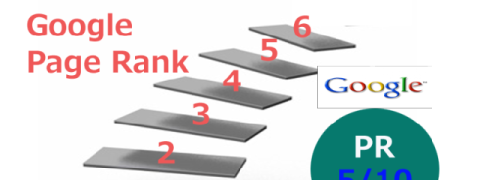First, to view your sites PageRank©, simply download the Google Toolbar for Internet Explorer, and visit your sites home page. Ironically, while we researched Google we stumbled upon the formula by conducting a search in Google.
The original* PageRank formula: PR(A) = (1-d) + d (PR(T1)/C(T1) + … + PR(Tn)/C(Tn))
For math wizards:
PR(x) is the PageRank of x, C(x) is the number of outbound links on a page x, d is a damping factor set between 0 and 1 and is controlled by Google.
For the rest of us:
Your sites PageRank is almost completely dependent upon links to your site, backward or reverse links, reduced, to some degree, by the total number of links to other sites on that page. A link to your site will have the highest amount of impact on your PageRank if:
1) The page linking to yours has a high PageRank.
2) The total number of links on that page is low, ideally, just the one link to your site. A site with a high PageRank and a large number of outbound links can nullify the impact on your PageRank.
To increase your PageRank, simply get as many links to your site from pages with a high PageRank and a low number of total links. Theoretically you can obtain a PageRank of 100% . You can also increase your PageRank by attaining many links to your site, no matter what their PageRank, as long as they are ranked. This is a good overall strategy since it will help you across the board.
Another contributing factor to your sites Google ranking is the IR score. This score relates the relevance of the search query to the actual text in the linking page and your site. One of IR factors is the anchor text, or the text in the link to your page. According to a Google’s creator, “Anchors often provide more accurate descriptions of web pages.” Thus, for sites that allow you to add URL’s be sure to put a link title with descriptive keywords. Google also uses your page title, font sizes, formatting, keyword positions, and proximity. Remember this though: Computers determine the search results, but it’s humans that will, or won’t, click on the links, so be sure titles with keywords make sense.
In Summary:
Whether it is Google, other search engines or pay-per-clicks, the meticulous selection of key-phrases, and descriptions utilizing these key-phrases, are crucial to successful Web marketing campaigns. The final piece, probably the most important to determine ROI, is a tracking system to inform marketing personnel if the clicks being generated with any campaign result in sales. There are many campaign variables that even though you produced a 5% click-through rate, might still not result in sales.
* The formula was located by Pete Freitag. This was the original formula and it has likely evolved since the Google founders were at Stanford. But the same premise holds that your importance is dependent strongly upon what others say about you via how they link to you. It is, in my opinion, quite ingenious, and Google is one of the most important tools utilized by my staff for many purposes.
About author:
Rob Thrasher is a New Millennium Business Consultant and can be reached at RobThrasher.com






One Comment